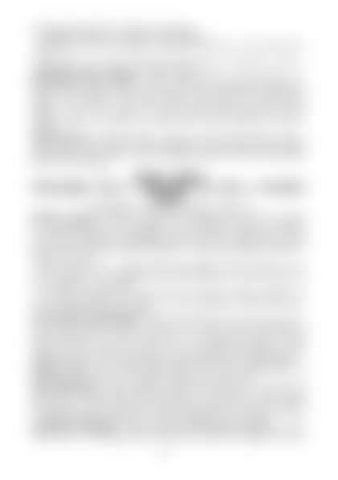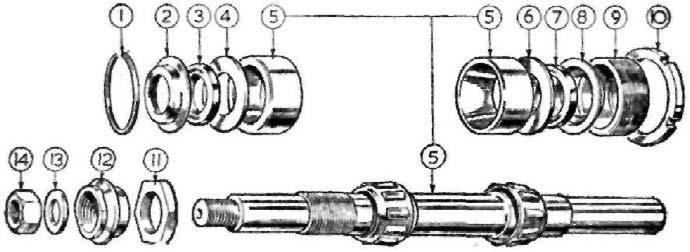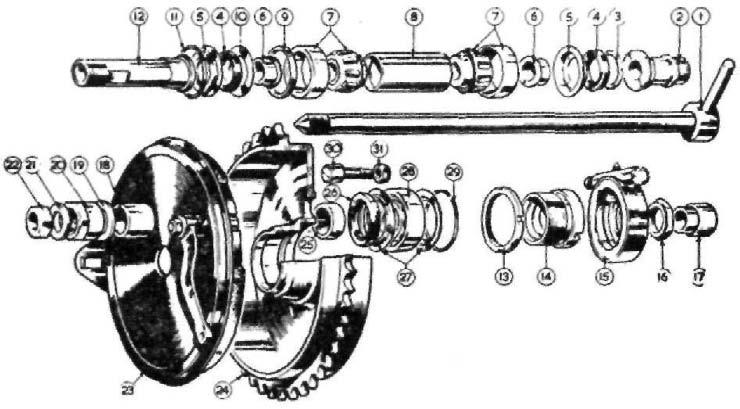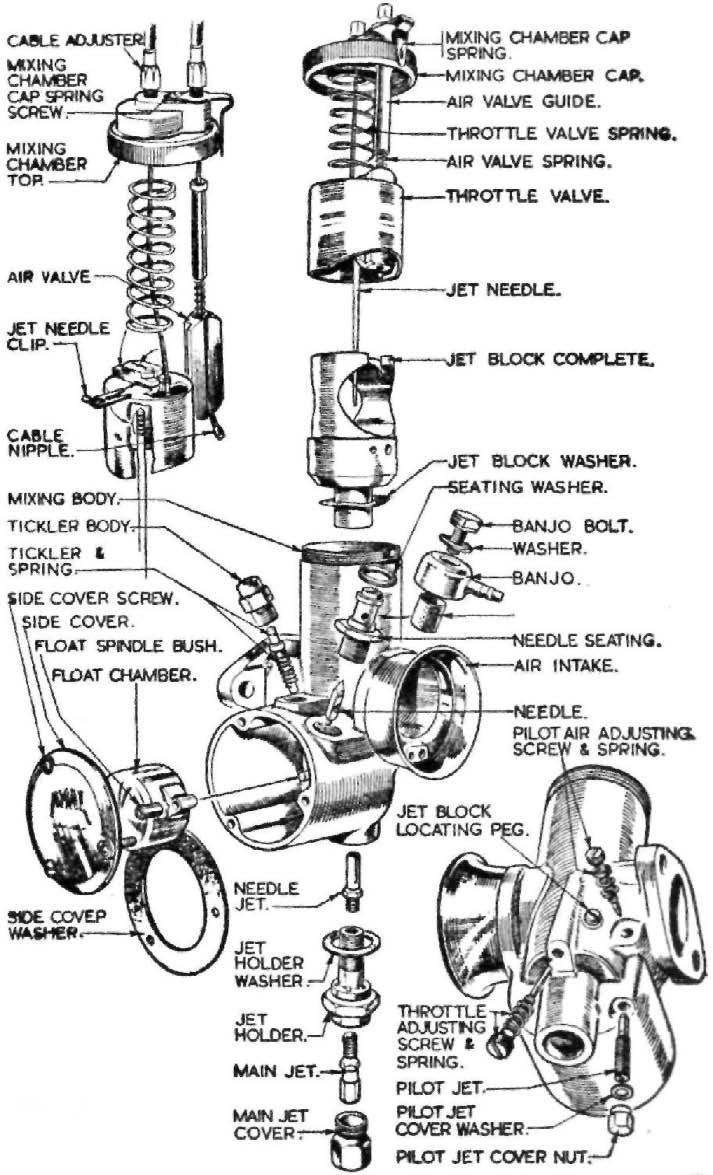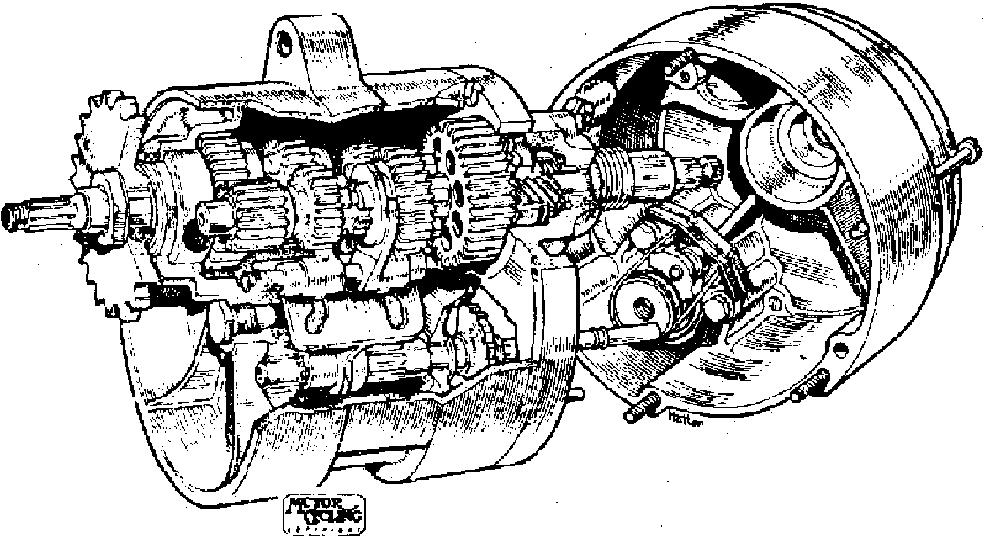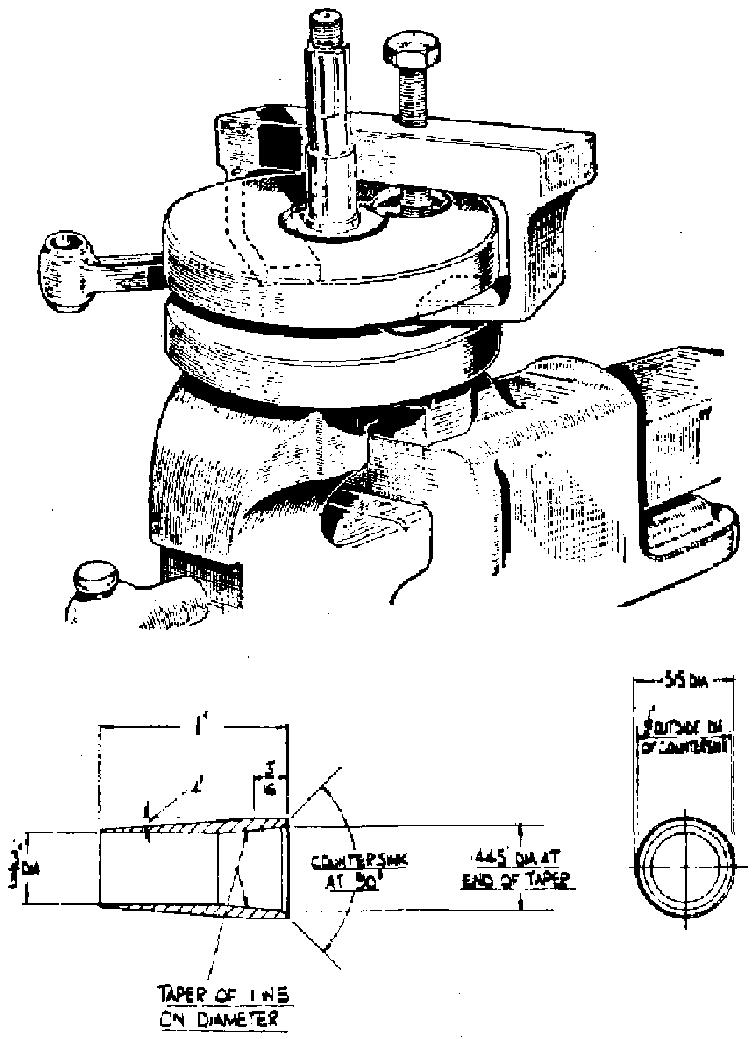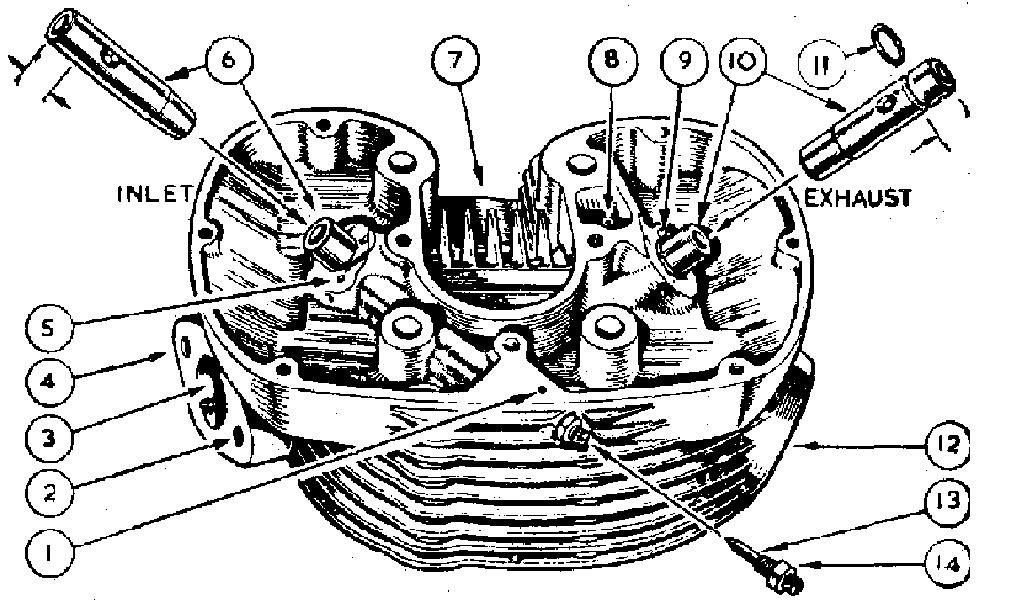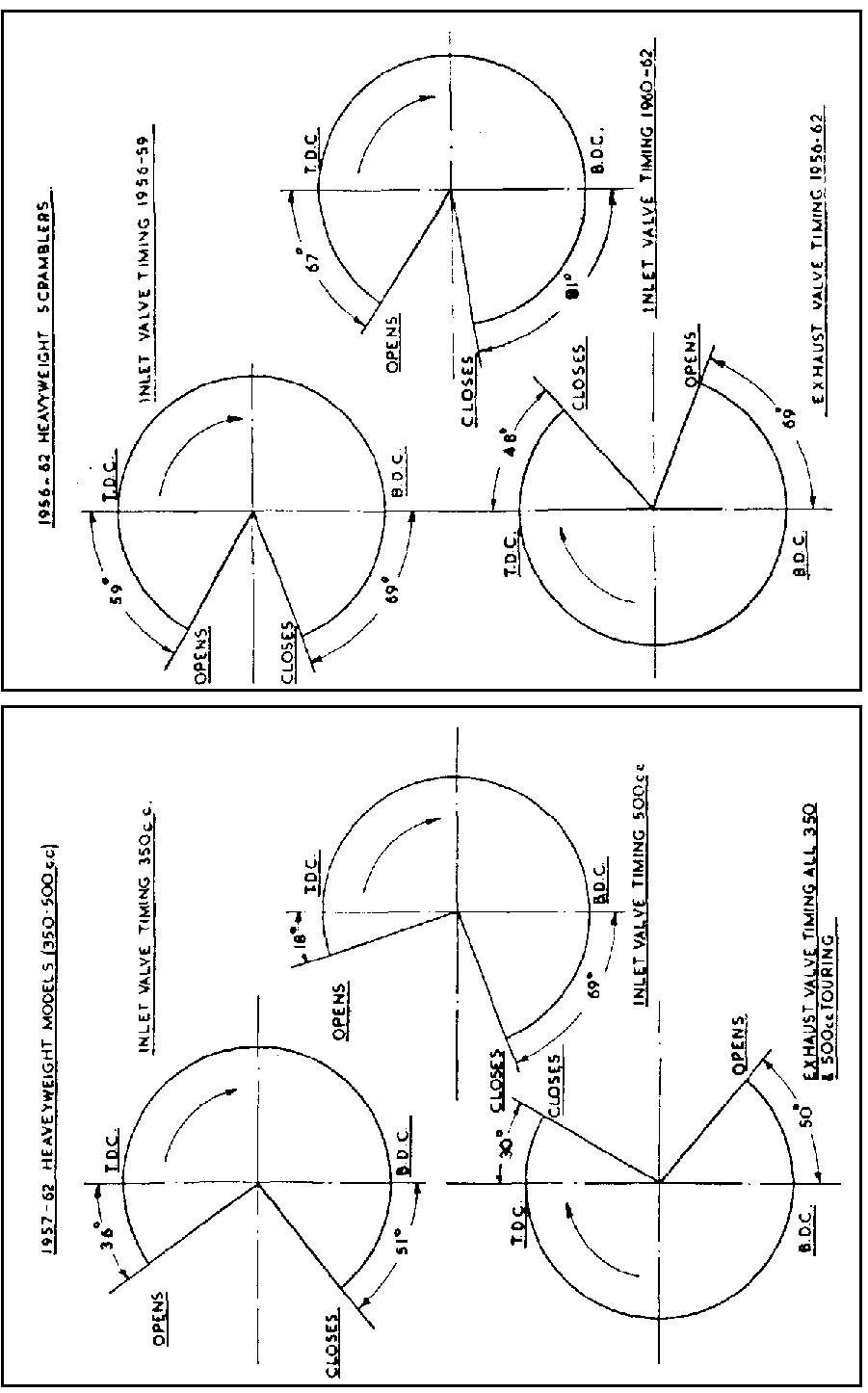operating through the oil filler cap opening. Completely unscrew the dutch cable adjuster. Disengage, from the handlebar operating control lever, the clutch inner wire. Pull cable, by its lower end, till removed from the machine, easing it through the frame cable clips while doing so. Dismantling shock absorber. Three thin and three thick rubbers are housed in the clutch centre and are located by the clutch hub steel plate (Fig. 20). For access, take out the three screws and move the plate to enable a screwdriver to be used to prise out the plate. To take out the rubbers use a. "C" spanner to turn the hub and compress the thick rubbers, which will come out easily after the thin ones have been extracted. Clutch bearing. The clutch hub is secured to the steel back plate by three spring studs and locknuts. After separating the back plate from the hub the bearing can be removed. When replacing, apply a little anti-centrifuge grease to the bearing.
FRONT FORKS Heavyweight, 350 c.c. Lightweight and 250 c.c. Scrambler Models
(The figures in parenthesis refer to Fig. 21) Stiff fork motion. First try the effect of releasing the two bolts securing the front mudgard to the fork slider (15). If normal movement is restored use washers between the mudguard and the slider to relieve side strain, or remove the guard and spread the sides. Try also releasing the four cap nuts (33) and work the forks violently to line up the inner tube and retighten the nuts. If the fork motion is unduly stiff, and assuming the fork tubes are not bent by impact, it is possible that the black bushes (9) have swollen and are a tight fit on the tubes. To rectify, dismantle the forks and ease down the inside diameter of the bush with emery cloth, until it is an easy sliding fit. Oil the fork tube, or use graphite before assembly. Fork noise on full deflection. Check the bottom cover tube (53) for contact with the slider extension (54), the cover tube may be deformed or canted. Remove the cover tube and set the tube face where it abuts against the fork crown (39) so that it is at complete right angles to the axis of the tube. The tube should be concentric with the slider extension. Usually there are score marks on the slider, under these circumstances. Rattle in forks. One of the damper rods (25) may be detached from the top anchorage. A low oil content will have the same effect. Fork spring rattle. Three neoprene rubber sleeves (Nos. 2, 4 and 5) are placed over the fork inner tubes, near the top. bottom and centre of the fork spring. If these sleeves have piled up at the bottom of the spring, the spring can rattle against the fork tube. Reposition or renew the sleeves to rectify. Apply some grease to the fork springs before refitting. Lateral fork movement. If the steering head bearing adjustment is correct and if there is a juddering effect when the front brake is applied, this can 71
